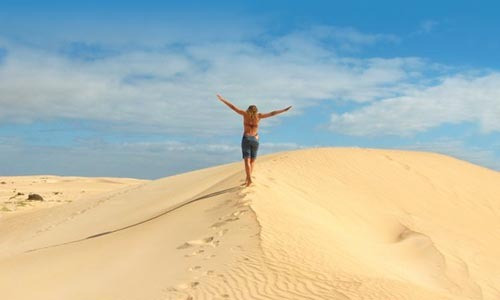The Sacred Mountain of Tindaya
Sacred Mountain of Tindaya
One of the most remarkable places in Fuerteventura. This "magical and sacred" place in the northwest of the island, as catalogued by the Canarian aborigines, reaches almost 400 meters high and covers an area of 182.61 hectares and is located in the municipality of La Oliva.
In 1987 it was designated as a Protected Natural Area, and three years later it obtained the distinction of an Ecological Sensitivity Area. The environment is full of podomorphic rock engravings, that is, in the shape of human footprints.
That Fuerteventura is an earthly paradise with endless beaches, turquoise waters and an enviable climate every day of the year is something that becomes quite clear to us just by looking at a picture of the island. What many people do not know about Fuerteventura is its rich culture and heritage, as well as the spectacular nature of all its spots. And that is why it is unknown to many that in Fuerteventura you can visit places as impressive as the Sacred Mountain of Tindaya.
What can you do in Tindaya Mountain?
First of all, to give more value to all the activities you can do on the mountain, it is advisable to soak up all its history. You should spend at least one day on one of the spectacular hiking routes that are suitable for everyone. It is even a very pleasant route to spend the day with the family and with children due to its low difficulty.
Do not hesitate to join our Grand Tour of Fuerteventura and you will be able to enjoy not only this emblem but also all the beauty of the island on a route of approximately six hours.
What should you know about Tindaya Mountain?
Much has been said and written about Tindaya Mountain in the almost 19 million years of its history, which hides its adjective of sacred, as well as the characteristic morphology or the flora and fauna that live there, and even the importance it has taken on today due to the possibility that it is the setting for the posthumous work of the sculptor Eduardo Chillida. This idea has been rejected by the head of Historical Heritage who wants to perpetuate the protection of the environment and its cultural and natural resources.
Meer details en boek



